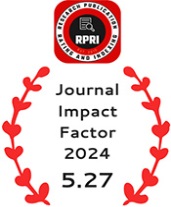The Economic Importance and Self-Sufficiency of QOSH TEPA Irrigation Canal
DOI:
https://doi.org/10.55544/ijrah.4.1.18Keywords:
Agricultural Products, Economic Importance, QOSH TEPA Canal, Self-SufficiencyAbstract
The Qosh Tepa irrigation canal stands as a significant project in Afghanistan, poised to transform thousands of hectares of arid land into self-sufficient sources of agricultural products.
This canal ranks among the largest in the region, diverting water from the Amu River to the Kaldar district of Balkh province. It spans 285 kilometers in length, with a width of 108 meters and a depth of 8.5 meters, extending to the Faryab Andakhoi district. The canal boasts a capacity of 6,500 cubic meters of water per second and 20 billion cubic meters annually, intending to convert 550,000 hectares of dry land into fertile farmland.
The canal's completion is planned in three phases. The first phase covers 108 kilometers from the Amu River in Kaldar district to Daulat-Abad district in Balkh province. The second phase spans 177 kilometers from Balkh's Daulat-Abad district to the Faryab Andkhoi district. Finally, the third phase involves supplying water to agricultural lands.
Upon the successful implementation of this project, Afghanistan will achieve not only agricultural self-sufficiency but also become an exporter to other countries. This article discusses the Qosh Tepa canal in two parts: the first section focuses on identifying the canal, while the second emphasizes its economic value and importance.
Downloads
References
Academy of Afghanistan Sciences. (2020). Regional water diplomacy. Kabul: http://asa.gov.af/index.php/ps/nods/705.
Authority, Water Resources. (2018). Development of Afghanistan National Strategy. Kabul: Http://moj.gov.af.
BBC. (2023). The first phase of the Qosh Tepa Canal is being completed. London: http://www.bbc.com/pashto/articles/crg0y73ly35o.
Center for Strategic & Regional Studies. (2016). Agriculture & Livestock. Kabul: CSRS.
Jamali, A., Lalzai, F., & Jamal, N. (2023). Marketing Constraints and Price Perspectives for Onion in Khost Province, Afghanistan. Journal for Research in Applied Sciences and Biotechnology, 2, 1-7.
Ministry of Borders, Tribes and Tribal Affairs. (2022). Qosh Tepa Canal. Kabul: Periodicals Magazine.
Rohullah, A. (2019). Signing feasibility studies for the large irrigation canal in the north. Kabul: http://www.tolonews.com/index/php/fa/business/.
Saif, Q. (2023). Introduction of Qosh Tepa Canal. Kabul, Afghanistan: www.afghan-german.net.
Suhib, H. A. (2023). Afghanistan is in a good position regarding the water of the Amu River. Kabul: Pajhowk News http://www.pajhowk.com/ps/2023/09/06/analysts-afghanistan-is-in-a-good-position-regarding-amu-water-esare-should-rellease.
Downloads
Published
How to Cite
Issue
Section
License
Copyright (c) 2024 Bakhti Khan Mushtaq

This work is licensed under a Creative Commons Attribution-NonCommercial-NoDerivatives 4.0 International License.




















